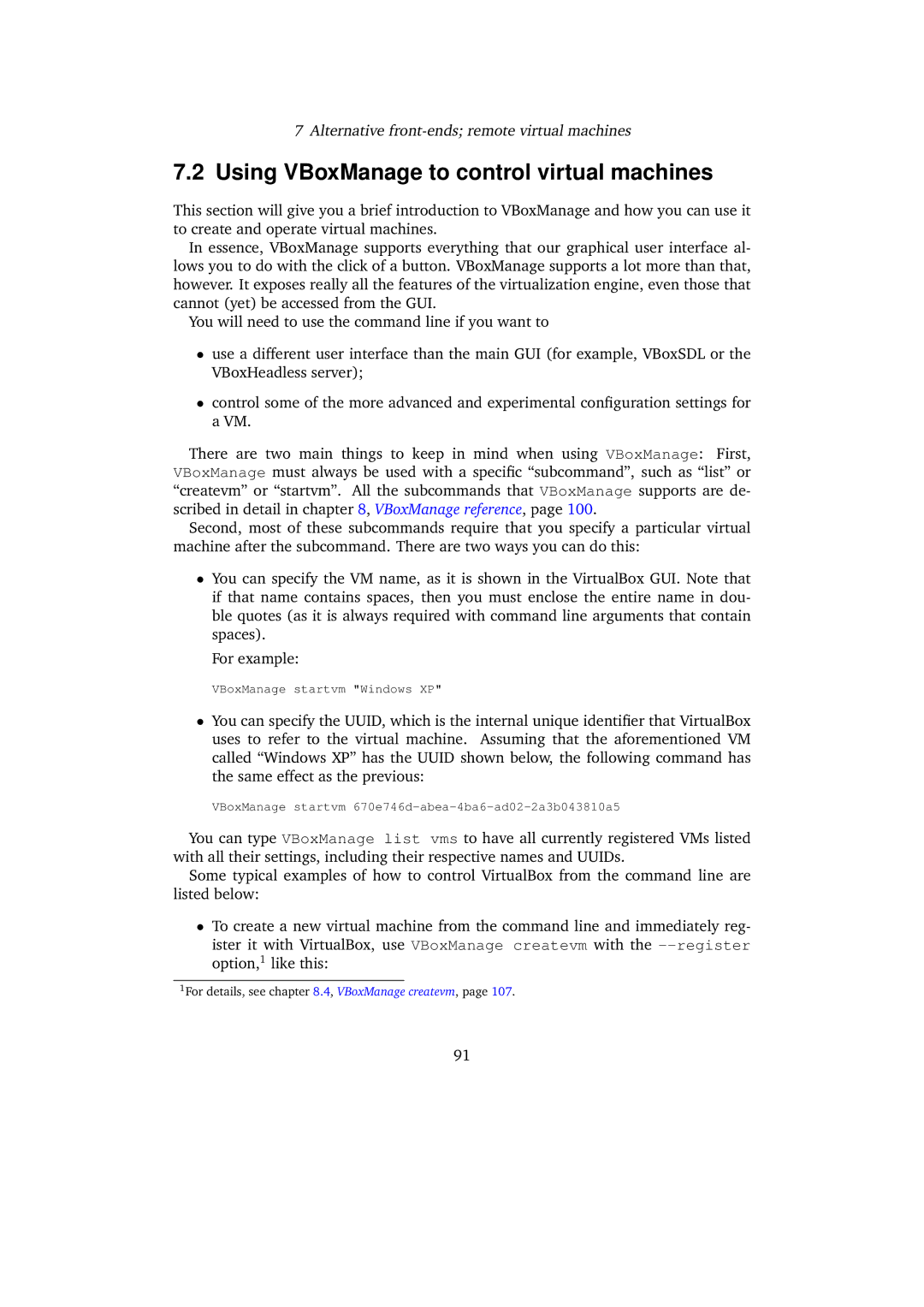7Alternative
7.2Using VBoxManage to control virtual machines
This section will give you a brief introduction to VBoxManage and how you can use it to create and operate virtual machines.
In essence, VBoxManage supports everything that our graphical user interface al- lows you to do with the click of a button. VBoxManage supports a lot more than that, however. It exposes really all the features of the virtualization engine, even those that cannot (yet) be accessed from the GUI.
You will need to use the command line if you want to
•use a different user interface than the main GUI (for example, VBoxSDL or the VBoxHeadless server);
•control some of the more advanced and experimental configuration settings for a VM.
There are two main things to keep in mind when using VBoxManage: First, VBoxManage must always be used with a specific “subcommand”, such as “list” or “createvm” or “startvm”. All the subcommands that VBoxManage supports are de- scribed in detail in chapter 8, VBoxManage reference, page 100.
Second, most of these subcommands require that you specify a particular virtual machine after the subcommand. There are two ways you can do this:
•You can specify the VM name, as it is shown in the VirtualBox GUI. Note that if that name contains spaces, then you must enclose the entire name in dou- ble quotes (as it is always required with command line arguments that contain spaces).
For example:
VBoxManage startvm "Windows XP"
•You can specify the UUID, which is the internal unique identifier that VirtualBox uses to refer to the virtual machine. Assuming that the aforementioned VM called “Windows XP” has the UUID shown below, the following command has the same effect as the previous:
VBoxManage startvm
You can type VBoxManage list vms to have all currently registered VMs listed with all their settings, including their respective names and UUIDs.
Some typical examples of how to control VirtualBox from the command line are listed below:
•To create a new virtual machine from the command line and immediately reg- ister it with VirtualBox, use VBoxManage createvm with the
1For details, see chapter 8.4, VBoxManage createvm, page 107.
91
